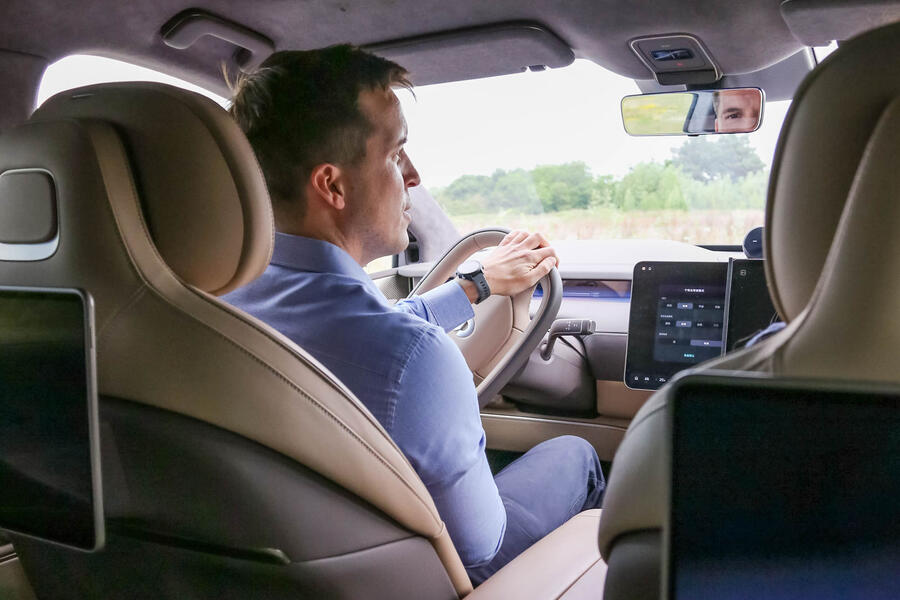This all plugs into a central control unit, which uses data from the car’s various sensors to decide what each suspension corner unit should do. Clearmotion doesn’t use cameras because they are unreliable in less than perfect conditions, and lidar sensors are expensive and create too much data.
To add in a predictive element, Clearmotion is also developing Roadmotion, which builds up a detailed scan of road surfaces in the cloud by taking in the data from any number of cars. (Anything from the past 10 years with adaptive suspension will do.) This data can then be fed back to cars with active suspension to allow them to anticipate the road surface.
“That data portion of the business has a way bigger potential,” said CEO Christian Steinmann. For example, that data could allow autonomous vehicles to avoid potholes and other hazards.
As well as being fitted as standard on the Nio ET9, Clearmotion’s suspension will be used on future Porsches. Other OEMs are showing interest too.
With greater scale should come lower costs, said Steinmann: “So far, every application of active suspension has been in ultra-luxury vehicles or race cars. My objective is to get it into mid-size vehicles. We hope to accomplish this within this decade – in China probably by 2027.”
Is it as good as Porsche’s Active Ride?

Autocar was invited to Clearmotion’s UK tech centre at the Horiba MIRA test track to experience its Nio ET9 demonstrator. In terms of hardware, it was exactly as you can buy it in China, although Clearmotion has tweaked the software to make it more to its own liking – and more suitable for UK roads.
The difficulty with such a system is that it is, by design, underwhelming. The aim is that you can’t feel the bumps. It’s only when I experience the same road in another car, or with the system turned off, that I realise that this B-road isn’t glass-smooth.
Turning the system on is quite spooky: every bit of pitch or head toss just vanishes. Adding on the Roadmotion somehow makes it even smoother. This is a more incremental change than the difference compared with normal air suspension, but it is easy to feel nonetheless.
